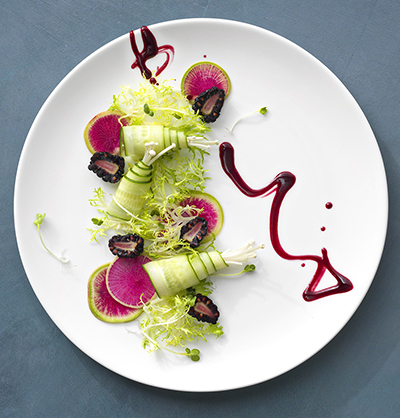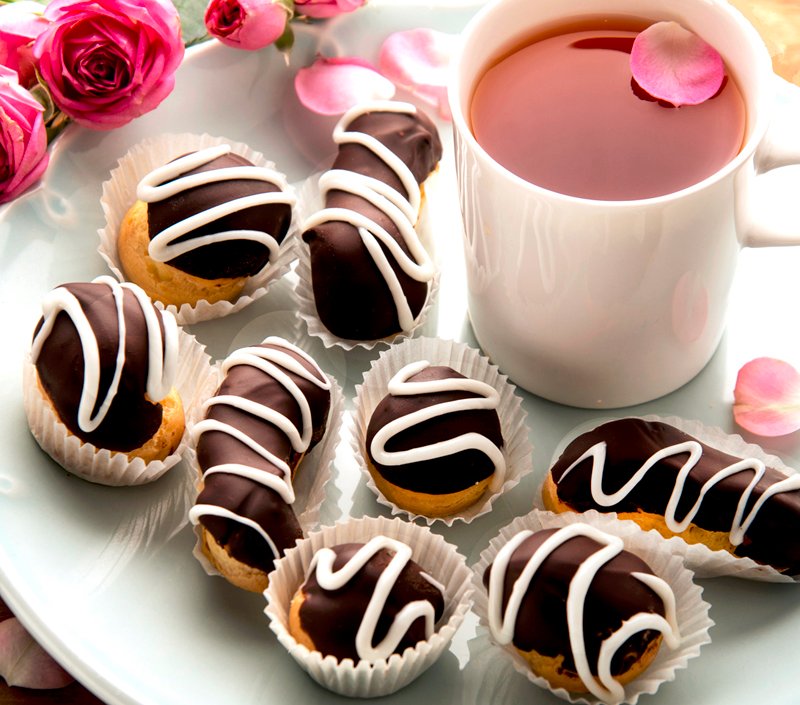Posted by
Tiffany Edouard

Food stylist and culinary consultant, Cindy Epstein, has been called a “makeup artist for food” and she certainly works edible wonders for the camera. In addition, Cindy provides a myriad of services to the food industry including recipe development, cookbook design and creation, culinary writing, project management and art direction. Her talent can be seen in catalogs, cookbooks, magazines, commercials and on retail products in grocery stores.
As a Midwest native with Greek and Italian parents you will find influential food culture in every layer of her lineage. With several food businesses and enthusiasts in her family, Cindy has been exposed to a culinary landscape from childhood.
Over the past thirty years, she has worked with an assortment of brands, media outlets, chefs and restaurants to produce stunning content, images and footage. She has developed recipes and produced sixteen cookbooks for her clients.
Working with Cindy to showcase TriMark’s Premier Collections tableware is always a treat. We recently asked her a few questions. Here is what Cindy had to say about her life and professional journey.

Photo: Ryan Beck
Please share with our readers what inspired you to become a food stylist.
Prior to food styling I owned a catering company, gourmet market, and bakery in Philadelphia. The art of presentation plays a critical role in catering and food merchandising because we eat with our eyes first. Before we smell the mouthwatering aroma of well-prepared food and taste its tantalizing flavors, we observe it, and how we see it and the feelings it evokes have a lot to do with how it tastes. Our minds get a preconceived notion of what to expect based on what we see. When I was catering I always relished the beauty and ambiance of the environment and the artful presentation of the food just before the first guests arrived. My work was all about creating beauty that the guests could experience through all their senses. When I sold my company in 1999, food styling felt like the perfect next career because I could focus on the art of presentation and the magnificence of food.
As a stylist and culinary consultant, what do you consider to be your top three strengths?
I always put the client first. They have hired me to bring their vision to life, and that is always my first priority. Mine is a service industry, and my focus remains on effectively achieving my clients’ goals to best represent their product.
I am a good problem solver. Being on a production set, whether it is for still or film and video, requires me to be nimble, quick, and often to improvise. Anything can change on set at any moment and I need to be able to solve it quickly and carry on. The camera “sees” everything!
My mentor once told me, to be great at what you do, you must also be skilled in business. He was right. I’ve been self-employed over thirty years, and started three successful businesses. Prior to that, I worked for a large corporation for ten years where I started as a client consultant and ended up running a division of the company. Without strong business skills, working as a freelance stylist and consultant would be near impossible. It’s critical to have excellent communication skills, passionate customer service, management, accounting, budgeting, planning, and marketing experience because you have to wear all those hats every day.
 Photo: Ryan Beck
Photo: Ryan Beck
Name three kitchen tools you can't do without and why?
My three most important tools are a good chef’s knife, a sharpening stone, and tweezers. Without a good sharp knife that feels comfortable in your hand, one can’t cook well. Tweezers allow me to move something as small as a bit of black pepper, and much of food styling requires constant attention to minutiae.
When on a shoot, what most drives your passion?
I am inspired by collaboration and creation. Working on a photo shoot is all about being part of a collaborative team. Whether the team is as small as the photographer and me, or an 80-person crew shooting a TV commercial, working together harmoniously is critical to success. Every person plays an important and usually specialized role in creating the final product. I find it exciting to interact with other creative people. I also feel great joy and passion when I am creating something beautiful.
What are some of the challenging elements of being a food stylist?
Physically, food styling is a difficult job. I’m often on my feet in constant motion for twelve to sixteen hours. Whereas a typical work day for most is eight hours, still shoots are planned as ten-hour days, and film is often planned for twelve hours. My work requires stamina and physical strength. It can often be rife with a fair amount of stress, especially when shooting a commercial because I have to move very quickly from scene to scene and there are often numerous last-minute changes.
 Photo: Carl Kravats
Photo: Carl Kravats
What advice would you offer a young person who is pursuing a similar career as your own?
Often aspiring food stylists erroneously think if they’re a good cook at home, they’re a good candidate for food styling, but it takes much more than cooking skills.
Learn what it takes to successfully run your own business because that’s exactly what you will be doing. You will be selling yourself, so learn to be comfortable marketing yourself. Gain self-confidence through practice, practice, and more practice. Find photographers who want to build their portfolios and work with them, on your own time, to practice and build your portfolio. Be a lifelong learner, always gaining more knowledge about food chemistry, cooking, and styling techniques. Be mindful when looking at food photos; they are everywhere! Whenever you see a photo, video, or film that has food in it, there was a food stylist working behind the scenes to help create that imagery. Magazines are full of advertisements for food. Food branding and packaging, websites, TV, movies, menus, social media, and retail stores are always trying to gain your attention. Try to find work as an assistant to a professional stylist before you try to fly solo. Learn about art and composition; study lighting because it’s the magic behind photography; always practice professional courtesy; learn to work collaboratively and unselfishly. Create a professional website to display your work. Keep in mind, you will make mistakes and things on set will constantly change, so be quick to solve problems and stay calm. Unless you’re in LA, Chicago, or NYC it is unlikely that you will be able to work full-time as a freelance stylist, so learn other skills that relate to food such as recipe development, art direction, food writing, recipe testing, culinary consulting, cookbook development and design, etc. to supplement your income.
Describe one of your most memorable dining experiences – where were you and what made it so special?
My most memorable dining experience was the first time my husband (then boyfriend) cooked for me. He made chicken, rice, and a salad and it was delicious. He had Vivaldi’s The Four Seasons playing in the background and candles on the table.